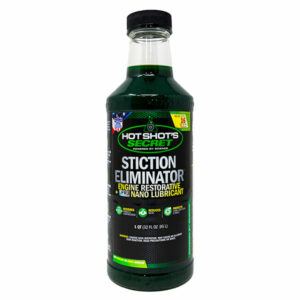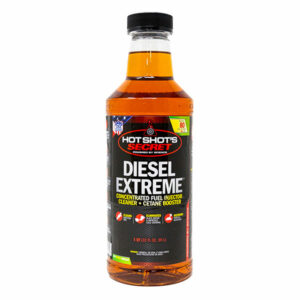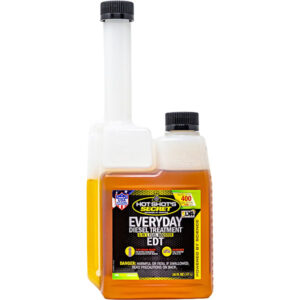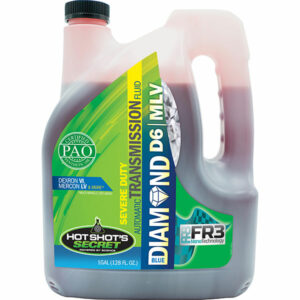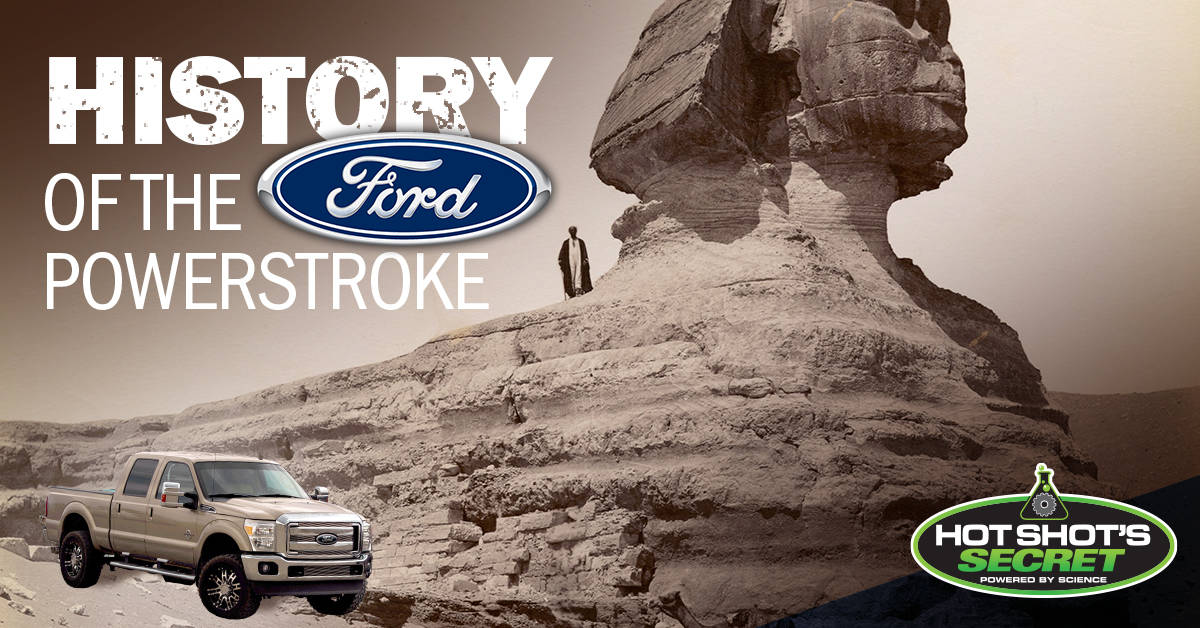
Diesel engines carry the entire world’s economy on their back. Starting with the freighters that transport goods over the ocean and inland rivers, the diesel-electric trains that haul load from coastal ports to the regional hubs to the big rigs that carry everything we buy to local stores, they are all powered by diesel engines. The same technology that powers the world economy also powers our local economies in the form of diesel-driven heavy-duty trucks and delivery vans. In the United States, that need is predominantly filled through Ford, GM, and Dodge trucks. Even if you know absolutely nothing about diesel trucks, you are undoubtedly aware of the massive rivalry between the Big 3 through rear window vinyl stickers alone. The history of these engines is full of triumphs, blunders, and marketing prowess that has made the names Cummins, Duramax, and Power Stroke household names. This is a look at the history of the Ford Power Stroke diesel engine family, where it started and where it is today.
You may not realize it, but Ford has only been offering diesel-powered trucks since 1983. Before that, all Ford trucks featured gas engines. Chevrolet and Dodge beat Ford to market with diesel trucks in 1978 with an Oldsmobile 5.7 V8 originally used in passenger cars adapted to GM trucks, While Dodge had a 100-hp 243 cubic inch unit built by Mitsubishi. Dodge’s diesel program did not fare well, and the entire engine was dropped in 1979. Dodge remained without a diesel truck for another decade. Ford stayed out of the diesel truck game for 5 more years until 1983, when the first Ford diesel truck engine was released, the 6.9l (420 cubic inch) naturally aspirated V8 diesel.
Ford noticed how its main competitors failed with passenger car diesels stuffed into trucks, so Ford struck a deal with another American automaker- International Harvester (IH). While IH may be best known for tractors and heavy equipment, IH had been running diesel engines in their passenger trucks since the late 1950s, using IH diesel engines from their line of tractors. These trucks are pretty rare, but they definitely exist, and Ford took notice. In 1981, Ford and International struck a deal to develop a modern diesel engine for trucks together, and the result is the basis for what would become the Ford Power Stroke diesel engine.
Before Ford could put the new 500-million-dollar engine program into production, International-Harvester had seen a significant decline in business and due to a worker strike in 1979, CEO Archie McCardell started selling off unprofitable lines. The bulk of the IH brand itself was sold to Tenneco, leaving the new Ford/IH diesel program, which was then rebranded as Navistar International Corporation, and the new Ford diesel survived to build the rivalry that exists today.
First available in 1983 as an option for the tidy sum of $2,225, the new Ford 6.9l diesel was an affordable, lightweight V8 engine that was capable of delivering over 300 ft lbs of torque and 161 hp, which in 1983, was pretty dang good. Compared to the GM Oldsmobile 350 that put out just 120hp and 160 ft lbs of torque, this new Ford truck had significantly better performance without the reliability issues that plagued the Olds diesel. The 6.9l diesel was substantially better than anything else on the market for light trucks, and it provided the market with a solution to the rising costs of fuel, as diesel was substantially cheaper than gasoline in those days, helping save industries like agriculture billions in fuel costs.
The 6.9l diesel was an IDI (Indirect Injection) engine without a turbo, so it is naturally-aspirated, meaning the vacuum generated by the retreating pistons inside the engine are the only source of incoming air. Early diesels were less than peppy, in fact they were quite sluggish, but the Ford 6.9 was very reliable, delivering V8 gas power at a fraction of the fuel use and with less maintenance. Features such as oil-cooled pistons, four-bolt mains, and roller tappets, kept the diesel running well for many miles. These engines feature a mechanical fuel pump that pressurizes diesel to 2100 psi to the chambers which topped out at 21.5:1 compression.
The success of the 6.9 led directly to the bump in cubic inches in 1986, with the addition of the 7.3l 444 ci upgrade. The 7.3 pushed output to 190 hp and 388 lb-ft of torque through some internal design changes. Originally redesigned for International S-series trucks and buses, quite a few changes were made to the 7.3 including updated heads with larger hardened valves, better valve seals, and a larger bore with select-fit pistons. By 1988, the 7.3 was the only IDI diesel engine and made its way into Ford trucks.
Unfortunately, the 7.3 developed some flaws that became serious issues. The cooling system “upgrades” and larger bore led to cylinder wall damage on the water jacket side. These flaws cultivated the development of anti-corrosive coolant additives. The final 7.3 upgrade occurred in 1993, when the first turbocharged Ford diesel was introduced. Featuring a wastegated Garrett turbocharger, the boosted 7.3 was underrated at 190 hp and 385 lb-ft of torque. This is where some of the “careful marketing” came into play, as the power charts abruptly stop at 3,000 rpm on the boosted 7.3, leaving a lot of spin for more power. It is well known that the 7.3 is capable of 250 hp with some tuning. However, Ford already had the replacement for the IDI 7.3 in the bank, so they didn’t want to overshadow their new diesel by advertising more power in the old one. The IDI diesel is not technically a Power Stroke, but is its genesis.
Power Stroke
Mid-year 1994, Ford introduced the 7.3l 444 ci Power Stroke direct-injection (DI) turbo-diesel V8. This is a rebranding of the Navistar T444E. Unlike the IDI diesels, the Power Stroke is fully electronically controlled, producing 250 hp and 505 lb-ft of torque. Fuel is pushed directly to the combustion chamber via HEUI injectors fed by a high-pressure oil pump. 1995-97 Power Strokes used a two-stage fuel pump driven off the cam, later engines had electric fuel pumps. The first generation (94-97) were not wastegated, which means the turbo has a high A/R ratio of 1.15, which means that the turbo is much slower to spool up, resulting in turbo lag and lower bottom end power.
For 1999 model-year trucks, the 7.3 was upgraded with a different turbo housing for better boost control and faster spooling with an A/R ratio of .84, mid 99 saw the addition of a wastegate. These trucks also have an intercooler to condense the air charge for better performance. Often touted as the most reliable diesel engine Ford ever built, these 7.3 Power Strokes are legendary. The forged connecting rods were very strong, but Ford switched to powdered metal rods in 2002, and these particular 7.3s are not capable of surviving when pushed to 450hp and beyond.
The biggest failure points on the Power Stroke 7.3 are electrical connections. The camshaft position sensor being the most common, there are several electrical-derived issues with the 7.3 and a few leaking joints that can be remedied. Ford had a winner on its hands, so now is the best time to change things up, right?
Power Stroke 6.0
While Ford’s diesel sales were doing well, the government was cracking down on emissions regulations. In order to keep up with new emissions standards, Ford developed a smaller displacement diesel engine for its ¾ and 1-ton trucks. The end result was the fault-plagued 6.0 Power Stroke. The 6.0l 365 ci V8 diesel used a variable-geometry turbo and generated 325 hp and 570 lb-ft of torque. What started with good intentions ended up costing Ford millions.
The issues are not just one or two related parts, it is a whole host of issues that plague the 6.0 and 6.4 Power Stroke. The EGR system was added to reduce emissions by cooling the exhaust gasses that are recycled through the engine. These are generally bad for performance on all engines, but in the Power Stroke, they had a bad habit of leaking coolant into the exhaust, leading to a trail of white smoke. The EGR system uses 2 valves to redirect some of the hot exhaust back into the engine’s intake to reduce emissions. Eventually, these valves start to stick from carbon deposits and other gunk. When the valve seizes, the ECM throws codes and reduces performance.
Most of the EGR failures on 6.0 engines stem from the EGR cooler, which is actually caused by another component- the oil cooler. When the oil cooler clogs, the coolant that should flow to the EGR cooler is greatly reduced, which causes the internal core of the EGR cooler to fracture from high heat. This leads to coolant spilling into the exhaust and you get a trail of white smoke. Eventually, the cooling system is diminished over all and you end up with high operating temps and eventually blown head gaskets.
Speaking of head gaskets, the 6.0 Power Stroke used TTY (torque to yield) head bolts, which today are common and not bad, however the ones used in the Power Stroke 6.0 were fairly weak. They were OK for stock engines, but even without performance upgrades, the TTY fasteners are prone to failure over time. Just adding a simple handheld tuner to a 6.0 Power Stroke could push the engine beyond what the factory head bolts can handle.
Electrical failures are common on the Power Stroke 6.0, as underhood temps and vibrations cause the fuel injection control module (FCIM) to fail. Cold starts exacerbate the problem and eventually leave 6.0 Power Strokes on the side of the road. Heat is probably the biggest factor in all 6.0 problems, including the oil cooler failures. Using a water-to-oil cooler, particulate matter clogs up the oil cooler, leading to big variances between the oil and water temps, which can end in catastrophic fashion.
The new variable geometry turbo (VGT) was great for spooling fast and boosting performance, but the vanes clog and stick quickly, reducing the performance and cooking the oil, which further increases the potential for an oil cooler failure, which heats the engine up more, which puts more strain on the cooling system and you pop a head gasket.
Another major problem for the 6.0 Power Stroke is sticky friction, or “stiction”, in the injections. Over time, the fuel and oil mix and a sticky residue builds up inside the valves of the injectors reducing their ability to perform. This results in hard starts, no starts, and rough running. This is what led to the development of Hot Shots Secret in the first place. Stiction is a problem for all diesels that use HEUI injectors as poor fuel quality tends to leave behind bits of carbon and residue that builds up inside the injector. Hot Shots Secret Stiction Eliminator is a good idea as part of your maintenance program.
In 2008, Ford introduced the 6.4 Power Stroke, which was the first factory twin-turbo light truck diesel engine. It also featured a new diesel particulate filter (DPF), which basically ruined the entire engine by choking it to the point of it being a fuel-hog, something that is not very popular for diesel drivers. The regeneration system commonly damages the rear two piston rings, more EGR failures, and excessive wear in multiple areas of the engine were common failures.
These systemic issues all worked to compound on top of each other, eventually leading Ford to scuttle the entire platform and start over. Lawsuits and continuing reliability issues led Ford to divest itself from the Navistar agreement in 2010, and all diesel engine design went in-house with Ford alone.
If you own a 6.0 or 6.4 Power Stroke, don’t fret. All of these inherent issues can absolutely be addressed before they become a serious problem. The key to your 6.0/6.4 diesel’s survival is proper maintenance. Cleaning the EGR valves at least every 20k miles and flushing the coolant system regularly. Non-invasive maintenance such as Hot Shot’s Secret Diesel Extreme in the fuel tank every 6000 miles will clean the internals of your fuel system. Additionally, it will reduce the number regeneration cycles because it improves combustion due to the fuel’s higher cetane rating when Diesel Extreme is added.
Stiction Eliminator should be added to every oil change (being mindful not to go over the oil capacity) to remove stiction from all oil-side components, including HEUI injectors. As oil is burned, which occurs in all engines, a sticky residue is left behind, creating sticky friction. If you have ever had an oil fryer that has been used a lot, you have certainly noticed that the sides around the fryer develop a thin film that is really sticky and hard to clean, this is the same type of residue you get inside your engine. While it is sticky on its own, mix in a little fuel, and it gets even worse. Stiction Eliminator is formulated to remove this film and bring your engine back to peak performance.
Power Stroke 6.7
In 2011, Ford released the 6.7 Power Stroke diesel, which got rid of the HEUI injectors and went to a more modern common rail injector design, added a GT32 SST single sequential turbocharger, and 4 valves per cylinder, which yielded 390 hp and 735 lb-ft of torque. As diesel technology has grown, Ford has tuned up the 6.7 to compete with the massive torque and horsepower of the Cummins and Duramax diesels. Today a Ford 6.7 Power Stroke pumps out an impressive 475 hp and 1050 lb-ft of torque, which represents the most powerful light truck diesel engine on the market.
As if that wasn’t enough, in 2018, Ford released the 3.0 Power Stroke, which is an impressive little engine. Designed for the F150, the 3.0 delivers 250hp and 440 lb-ft of torque while maximizing fuel economy at 30 mpgs highway. This is the first time in Ford history that an F150 had a diesel option, and that means the diesel F150 has a towing capacity of 11,440 lbs.
The Ford Power Stroke engine line is akin to a movie or book plotline, it starts out slow, building to a crescendo, and then a struggle ensues, only to eventually come out the hero with best-in-class performance and a storied name. This is how legends are born, and the Ford Power Stroke is absolutely that, legendary.

